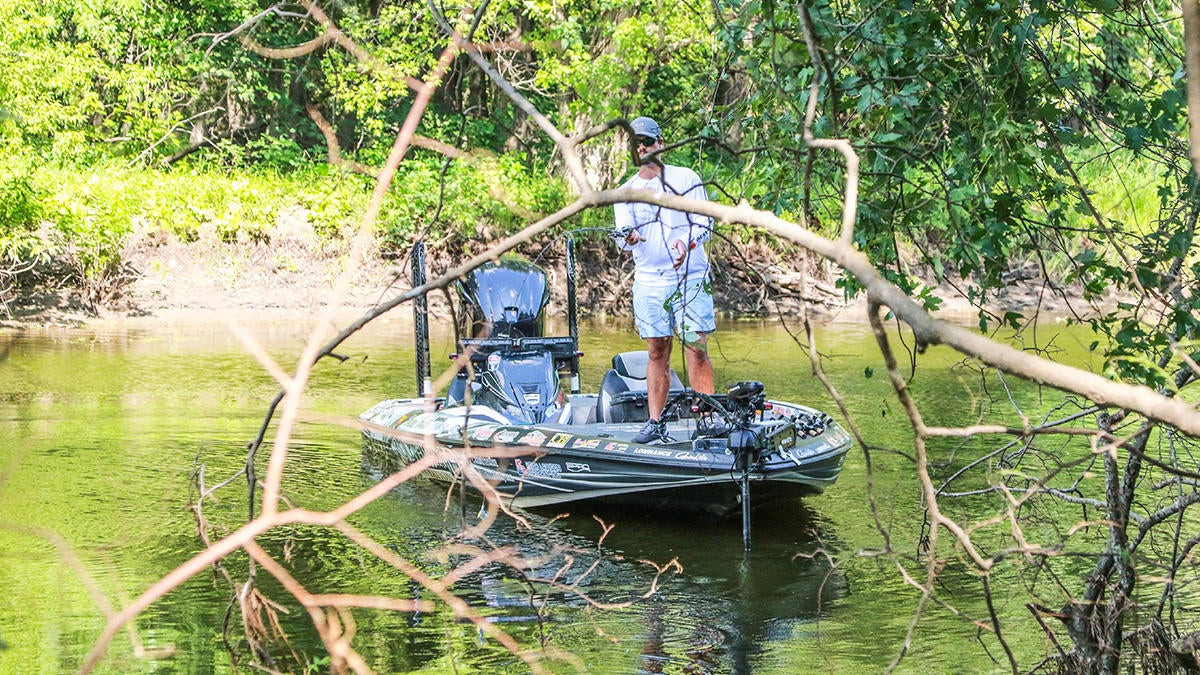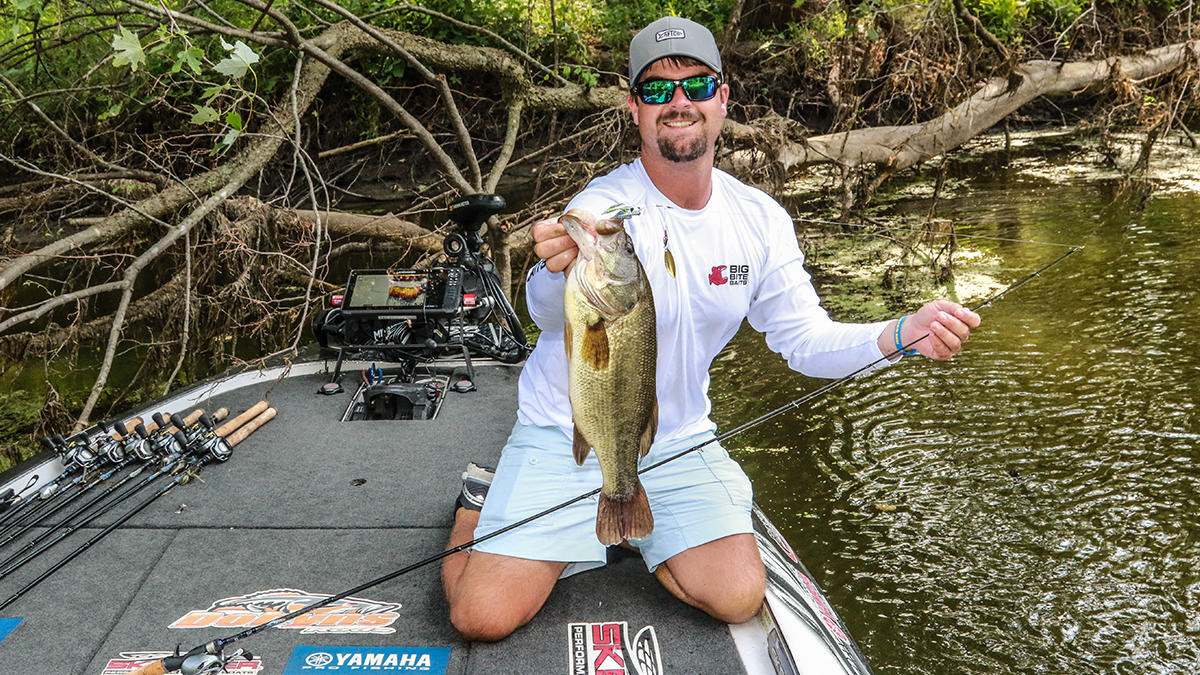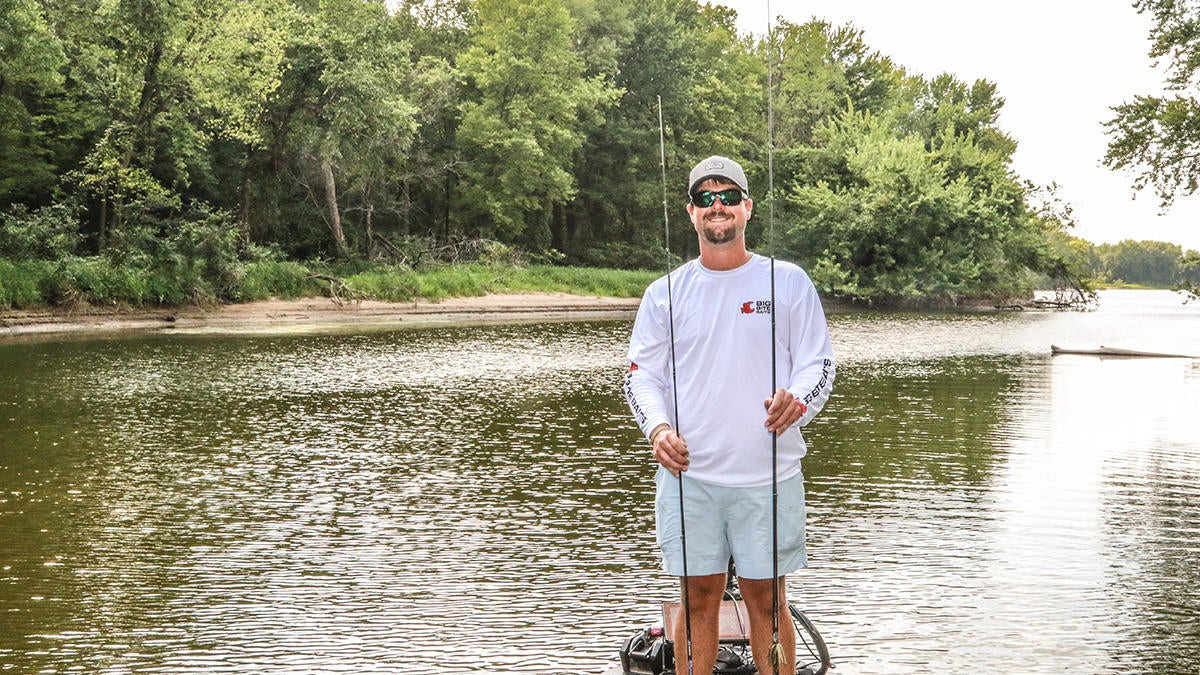Warning: Undefined variable $k in /home/nginx/domains/wired2fishcom.bigscoots-staging.com/public/wp-content/themes/understrap-child-0.6.0/functions.php on line 984
Warning: Undefined variable $k in /home/nginx/domains/wired2fishcom.bigscoots-staging.com/public/wp-content/themes/understrap-child-0.6.0/functions.php on line 987
When it comes to catching bass in tight quarters, pro angler Drew Cook is long on interest and short on patience. That’s why he always keeps a short rod or two rigged and ready.
How short? How ’bout a 6-foot, 3-inch Dobyns Champion XP crankbait rod? Calling this somewhat of a throwback deal, the Elite Series rookie from Quincy, Fla. said he has never lost his early appreciation for a rod class that as fallen from the norm.
“When I was a kid, a 5-6 to 6-6 rod was normal and a 7-footer was what you had for flipping,” Cook said. “Everything has gotten longer. I think it’s because of new reel technology and the ability to cast longer. Also, there are new techniques developing all the time, and rod makers have to design new rods.”

Most likely short rod scenarios
Nevertheless, Cook frequently finds himself working areas in which a longer rod becomes more of a liability than an asset. His top short rod scenarios are as follows:
- Small creeks, sloughs or canals with lots of overhanging vegetation. Here, it’s not only about the tight quarters; it also a matter of slinging a tiny spinnerbait or popper to match smaller backwater forage.
- Floating docks with lots of cables on the bank side. This often-overlooked inside section offers tight pockets and narrow lanes best accessed with short, precise casts.
- When fish follow high water into the trees, big opportunity awaits in small spaces. For this, he needs a rod he can cast without bumping trunks.

On the money
Pro angler Greg Hackney also finds sub-7 rod handy. For him, a 6-8 Lew’s Hack Attack allows him a higher degree of accuracy than models of 7 feet or more.
“I use this rod to target fish; for accurate casting under boat docks or overhanging limbs, or throwing to specific patches of grass,” Hackney said. “We’re not talking about open-water, two-handed firing it out there. We’re up-close-and-personal, picking apart visible cover.”
Now, Hackney has, in years past, used rods as short at 6 feet – and he still appreciates that size. However, overall consumer trends have made such sizing less common.
“The market has caused me to go a little longer because, for some reason, those short rods don’t sell well,” Hackney said. “I had this 6-8 rod built to my specs but I probably could’ve gotten by with a 6-6; but now everybody thinks you have to have a 7-foot or longer rod for everything.
“I disagree because longer rods don’t cast as good when you roll cast. Typically, when I’m using a 6-foot to 6-8 rod, I’m using my wrist to roll cast that bait. It’s all about target fishing. You have to be able to hit a 6-inch circle with the lure.”

Considerations
The right match: Hackney matches his short rod with a Lew’s Super Duty LFS baitcaster because the lighter reel creates the right balance. Here, the lower line capacity is the right fit for short-range work.
“With a spinnerbait, I want a 6:1 gear ratio, but for topwater plugs and buzzbaits, I like a faster gear ratio; at least a 7:1, if not an 8:1,” Hackney said. “You’re fishing those latter two on a slack line and when a fish bites, you’re able to pick up line really fast.
“With a spinnerbait, you don’t want to overturn it because you’re fishing close – 10 to 15 feet. Most of the time, you have to get up close to get your bait up under that cover and it’s hard to do that from 70 feet away. Usually, once that bait hits the water, you’re only fishing it 5 to 10 feet, at the most, before you reel it in and throw it again.”
On the line: Cook agrees and notes his preference for spooling a Shimano Curado size 70 with 14-pound monofilament for spinnerbait.
“Anytime I’m using that short rod, the bait is no more than 10 feet from me, so I want more ‘give’ to make sure I don’t take the bait away from them,” he said.
Fighting form: Cook’s aware that the biggest drawback of short rods is less fish control, but he has a simple solution – wait ’til the fish runs out of gas.
“You obviously don’t have as much length to turn their head if they try to get wrapped in the trolling motor or the Power-Poles, so I play them out longer,” Cook said.
It doesn’t take long to exhaust a largemouth, but with any bass species, make sure you give him a few seconds to recharge his batteries before releasing.












